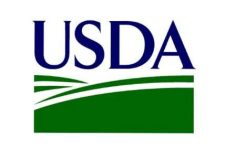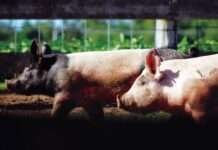(Washington, D.C., January 12, 2021) – Today, the U.S. Department of Agriculture (USDA) released its U.S. Agriculture Innovation Strategy Directional Vision for Research (PDF, 4.8 MB) summary and dashboard that will help to guide future research decisions within USDA. The strategy synthesizes the information USDA collected as part of a public announcement earlier this year engaging the public on research priorities under the Agriculture Innovation Agenda (AIA).
“This initial report is a culmination of creative minds from across the agricultural community,” said Deputy Under Secretary Scott Hutchins, who leads USDA’s Research, Education, and Economics mission area, and who is responsible for research efforts under the AIA. “Innovation and ingenuity have always been key to solving critical agricultural production challenges and will also be critical for addressing new and emerging challenges on the horizon—and our stakeholders advocated for some truly bold goals. We believe this information and the AIA will create enthusiasm, bridge collaborations, drive constructive discussion, and spark imagination to convey the positive role innovation will play to help solve challenges that face our nation in meeting pressing demands to feed a growing population in a sustainable way,” said Hutchins.
USDA collected hundreds of responses through the RFI and stakeholder-led workshops. Respondents were asked to identify transformational research goals for the next era of agriculture productivity and environmental conservation. They were also asked to propose approaches to these opportunities around four innovation cluster areas (Genome Design, Digital Automation, Prescriptive Intervention, and Systems Based Farm Management), and to identify gaps, barriers, and hurdles to meeting these goals.
This report summarizes the extensive stakeholder input and defines discovery goals that will help inform research to best address the AIA for the next 10 to 30 years.
USDA developed the public dashboard to help sort the information collected from stakeholders. Stakeholders and customers can use the dashboard to take a deeper dive into the data to gain insights on agricultural innovation opportunities over three time horizons, including near-term solutions, longer-term transformational solutions, and next era concepts.
Both products are iterative and are starting points for moving the innovation community forward in reaching agricultural research goals and AIA outcomes. USDA will seek additional input from stakeholders to continue to shape and build the agriculture innovation strategy and fill any remaining gaps where more input is needed. Next steps include aligning existing USDA research programs against these bold innovation goals, while also linking existing research activities to the objectives to inform the broader innovation community of progress and enlist their engagement.
Background on USDA’s Agriculture Innovation Agenda (AIA):
The AIA is a Department-wide effort to align USDA’s resources, programs, and research to provide farmers with the tools they need to position American agriculture as a global leader in meeting future food, fiber, fuel, feed, and climate demands. As part of the AIA, USDA set ambitious goals to increase agricultural production by 40 percent, while cutting the environmental footprint of U.S. agriculture in half by 2050.
The AIA is comprised of four main components. The first component is to develop a U.S. Agriculture Innovation Strategy that aligns and synchronizes public and private-sector research. The second component is to align the work of our customer-facing agencies and integrate innovative technologies and practices into USDA programs. The third component is to conduct a review of USDA productivity and conservation data to improve our ability to track progress against our goals. Finally, USDA set benchmarks to hold us accountable. Learn more on USDA’s Agriculture Innovation Agenda website.





